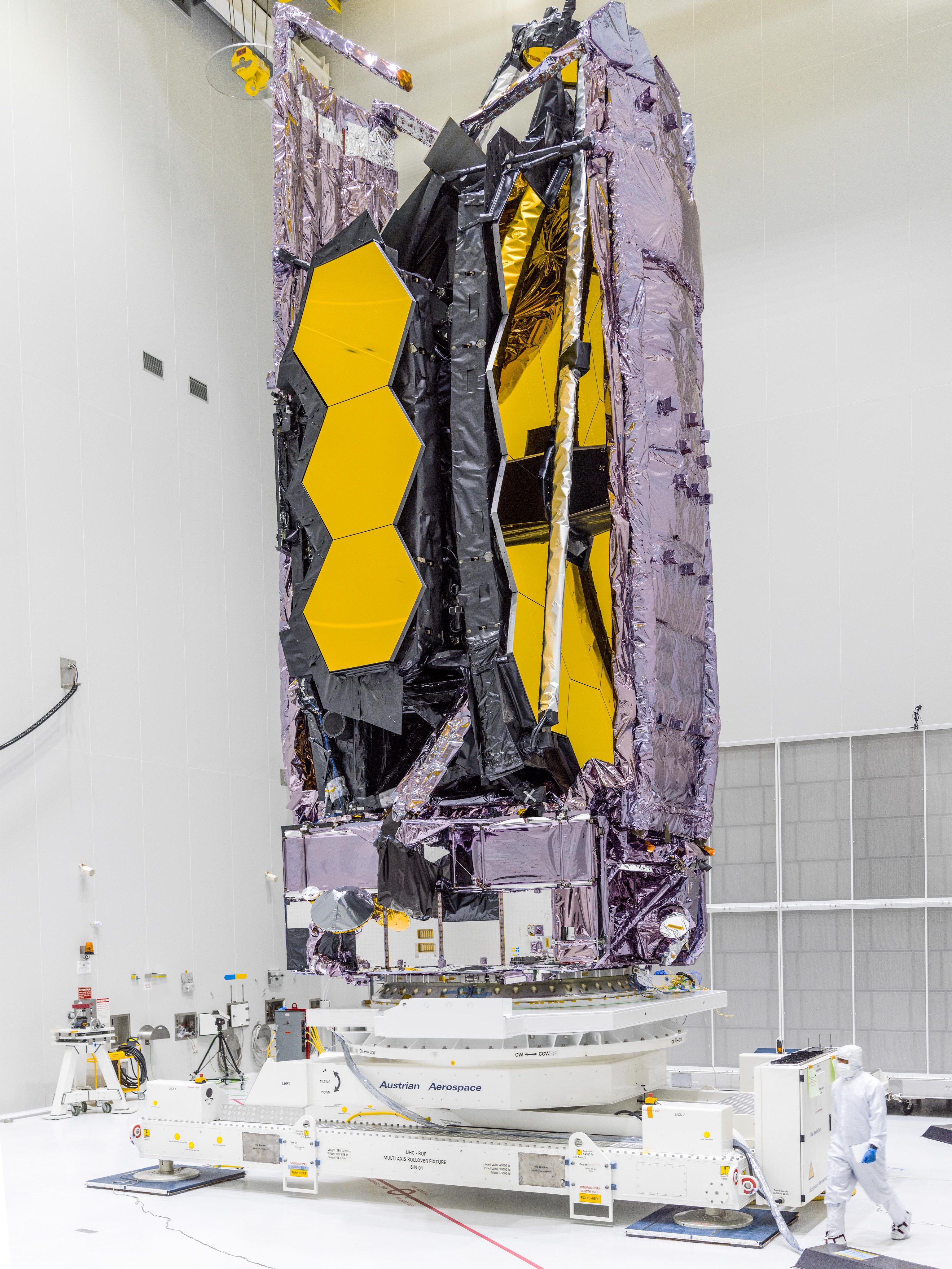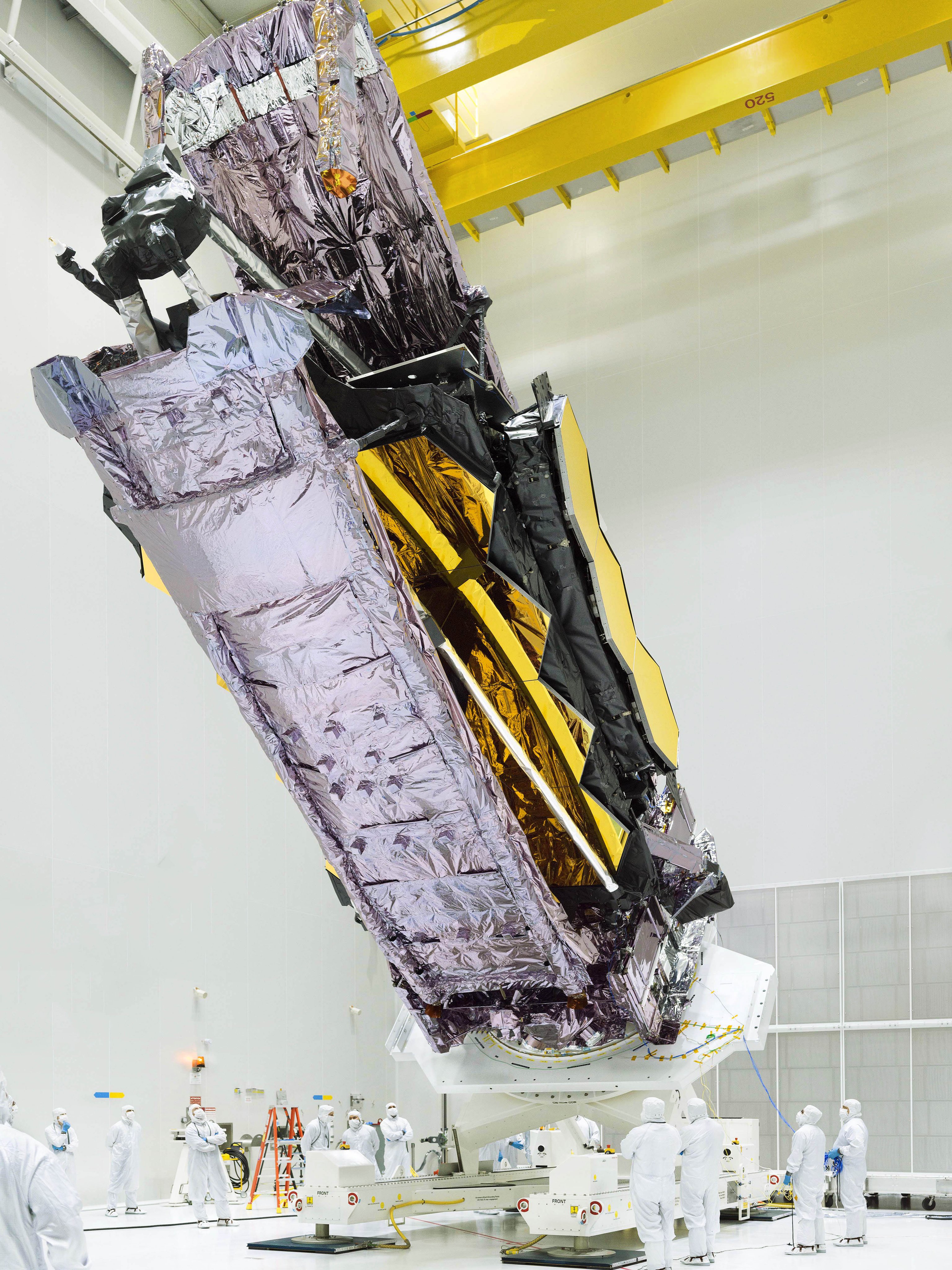NASA's James Webb Space Telescope looks squeaky clean at spaceport for December launch (photos)

These are some of the last good looks we'll get at NASA's huge James Webb Space Telescope before it leaves this world forever.
On Monday (Oct. 18), NASA posted a few photos on Twitter of the $10 billion Webb in its cleanroom at Europe's Spaceport, in the French Guiana town of Kourou. The observatory dwarfs the bunny suit-clad technicians getting Webb ready for launch, which is scheduled to take place Dec. 18 atop an Arianespace Ariane 5 rocket.
Webb, which NASA bills as the successor of its iconic (and still very functional) Hubble Space Telescope, arrived in French Guiana last Tuesday (Oct. 12) after a 16-day ocean voyage that covered 5,800 miles (9,300 kilometers).
Related: Building the James Webb Space Telescope (photos)

But that journey was nothing compared to what lies ahead. After launch, the telescope will motor to the Earth-sun Lagrange Point 2, a gravitationally stable spot in space about 930,000 miles (1.5 million km) from our planet. That's much farther away than the Earth-orbiting Hubble Space Telescope, which was serviced by astronauts five times between 1993 and 2009. (There will be no crewed maintenance missions to Webb.)
Once Webb reaches that distant destination, it will deploy its tennis-court-sized sunshade and begin studying the cosmos with the aid of a primary mirror 21.3 feet (6.5 meters) across — nearly three times wider than Hubble's.
The sunshade is necessary because Webb is optimized to observe the heavens in infrared light; its cameras and instruments must be kept very cold to pick up these heat signals, some of which are extremely faint.
Breaking space news, the latest updates on rocket launches, skywatching events and more!
The big new telescope will make a variety of high-impact observations, NASA officials have said. For example, Webb will help scientists learn more about the universe's first stars and galaxies and hunt for signs of life in the atmospheres of nearby exoplanets, among other tasks.
Mike Wall is the author of "Out There" (Grand Central Publishing, 2018; illustrated by Karl Tate), a book about the search for alien life. Follow him on Twitter @michaeldwall. Follow us on Twitter @Spacedotcom or Facebook.

Michael Wall is a Senior Space Writer with Space.com and joined the team in 2010. He primarily covers exoplanets, spaceflight and military space, but has been known to dabble in the space art beat. His book about the search for alien life, "Out There," was published on Nov. 13, 2018. Before becoming a science writer, Michael worked as a herpetologist and wildlife biologist. He has a Ph.D. in evolutionary biology from the University of Sydney, Australia, a bachelor's degree from the University of Arizona, and a graduate certificate in science writing from the University of California, Santa Cruz. To find out what his latest project is, you can follow Michael on Twitter.

